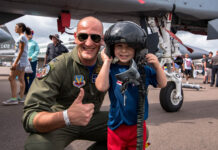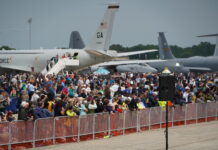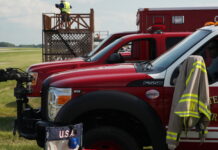During my eight years as president of the International Council of Air Shows, our business has had nearly 50 different fatal accidents. There is virtually no one who has been in the air show community for any significant period of time who has not been affected by at least one of these accidents. Personally, there is nothing that I deal with in my position with ICAS that is more difficult or distressing.
Indeed, the only thing more heartbreaking than the accidents themselves is our failure as an industry to regularly and systematically analyze and learn from them. Dave Hirschman’s article is the latest effort to address this second, more correctable tragedy, but a permanent fix will require a cultural change in the way we look at and react to air show accidents.
In my experience, the immediate and most honest response by an air show pilot confronted with news on the death of another air show pilot is to distance himself from the accident victim. The response is so predictable and so universal among air show pilots that — under different circumstances — it would almost be humorous. Warbird and sport aerobatic pilots. Old guys and young guys. Veterans and newbies. Aggressive and not-so-aggressive aerobatic performers. No one is immune. “I would never have put myself in that situation” or “My plane would never respond that way under those circumstances” or “He was always flying on the edge; I’m not surprised.” In other words, “That couldn’t happen to me, so I don’t really need to think about it very much.” Distance yourself from the dead and the possibility of your own death becomes more remote.
This is certainly an understandable reaction to difficult news. And, anecdotally and individually, some of these rationalizations might actually be true. But, statistically, across our entire air show business, they are not. The sad fact is that our accident victims are repeating the same accidents as earlier accident victims. And, from my perspective, that’s the most important message behind Hirschman’s article.
The jet pilot who begins the pull on a split S or reverse half Cuban maneuver too early or with insufficient altitude. The formation pilots who lose sight of one another during an aerobatic maneuver with tragic results. Three snap rolls on a down line when he usually does two. The warbird pilot who pulls too hard and stalls. The still inexperienced pilot who tries a new gyroscopic maneuver at too low an altitude and the maneuver develops differently than he expected. Failure to properly adjust for high density altitude conditions.
It is clear that there are lessons to be learned and mistakes to be avoided if a pilot is willing to immerse himself in the details of past accidents. I am in no position to say what those lessons are, but I’m certain that at least some of the lessons are contained in that list…if our pilots are willing to consider the possibility that they are in danger of repeating some of the same mistakes that have already killed other air show pilots.
That will mean creating an environment in which an air show pilot’s first reaction is to consider how much he has in common with an accident victim rather than how different he is from that victim. Only then will he open his mind to the possibility that there is something to be learned…a tidbit or an adjustment or a self-checking mechanism that may prevent another accident.
And not just inexperienced pilots either. There are lessons in there for anybody who flies an airplane at an air show, whether you’re a new air show pilot with a brand new 500-foot Statement of Aerobatic Competency and a recently purchased Pitts S2B, a six-year air show veteran with a P-51 and a surface card or a living air show legend with 20+ years of experience and the respect of every other pilot in our business.
There is nothing comprehensive, definitive or final about the list of recent accidents; the list includes no accidents before 1997 and does not include every accident since 1997. The accompanying analysis is strong, but should not be surprising or enlightening to even inexperienced air show pilots. The list is important because of the dramatic manner in which it imparts lifesaving advice. Nearly 50 pilots sacrificed their lives to provide us with these lessons, warnings and reminders. The most fitting tribute we can make to their memory is to pay close enough attention to avoid making the same mistakes.








